By the late Medieval Era armor had advanced to the point that that a shield was no longer a necessary accoutrement . Unlike chainmail, the steel plates of advanced armors could both dissipate and deflect the kinetic energy of the strike. Earlier chainmail-based armors could only serve to help in preventing a cut or puncture through the metal ring mesh, but they could not satisfactorily absorb enough of the force of a strike to make most warriors willingly discard the use of a shield.
By the late Medieval era it was increasingly common for professional men-at-arms, town levies and even quality archers to sport more plate-based armor pieces. Plate by this time was no longer the sole reserve of the nobility and the well-heeled knights. True, custom-crafted, fashionable armors by the greatest German and Italian craftsmen could cost a kings ransom, but less extraordinary, yet highly protective plate armor and armor pieces were being produced in large numbers at workshops where craftsmen divided and specialized their labor.
The increasing proliferation of plate forced innovation for weaponsmiths to counter plate and practically every weapon of the medieval era had some alteration to its form to adapt. But the greatest tool to defeat armor was one that was ironically created by the armor itself – The second hand. Without a needed shield, the late Medieval warrior had a free hand to wield larger, more devastating weapons, and with some tweaking in design, these weapons could be made to pound and puncture plate armor. Until the advent of reliable and stronger gunpowder weapons, arms and armor in Europe would be embroiled in a tug-of-war between armorers and weaponsmiths, who would briefly innovate an advantage, before their competitors would figure out how to counter it.
The pole-axe is one late Medieval weapon that is particularly characteristic of this changing period of warfare. Requiring two hands, its hammer and axe head was designed specifically to batter and rend the greatest of armors. It struck with deadly force and was a favored weapon of the field, not just by infantry, but by the knights themselves. It was not uncommon for a knight to fight dismounted with a pole-axe and their affinity for the pole-axe led to it being one of the weapons used in tournaments and trial-by-combats.
Though the pole-axe looks like a brutish weapon, it had a surprisingly sophisticated martial art in Europe. Used in a manner akin to a quarterstaff, the pole axe could block and deflect with a wooden haft protected by its metal langets. The inside curve of the axe could be used to trip or sweep an opponent, or even used as a hook to be wedged into a segmented seam of his armor and then used as a lever to drag him to the ground. When an opening was forced the head or the butt end would strike. Often, the fight on the field was ended with a coup-de-grace to the head by the victor to a dazed and stumbling opponent.
This pole-axe by Cold Steel has a drop forged head of blackened 1055 High Carbon steel. The blade edge is sharp. It comes with a haft of American Ash Wood. Assembly for this item is required to attach the head and its langets to the shaft. Instructions and components necessary are included.
Please Note: This Item comes unassembled. Components and Assembly Instructions are Included.



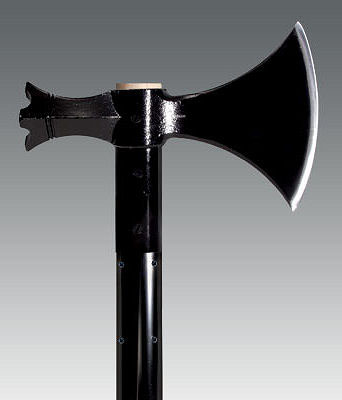
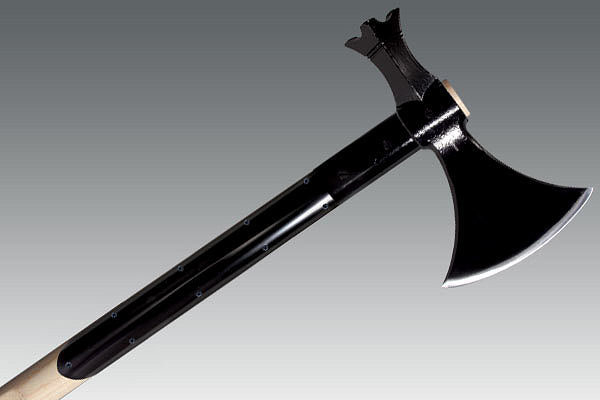


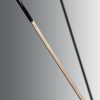
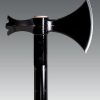

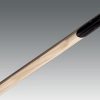
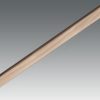
Drew A. –
Nice axe This piece is a nice addition to my collection. Though the handle seemed too flexible, but has held up nicely to some moderate use. Over all I like it.
Glyn –
This is a great axe, I have used to actually cut thick logs. It did the job and holds an edge very well. I have also used it to split wood as well. The weight of it really gives it the power to split things. I also tested the hammer on some steel, which it dented as well.
If you’re looking for a fierce combat weapon, and fighting a knight I highly recommend this weapon.
HenryofSkalitz (verified owner) –
This axe is an absolute beast definitely capable of destroying Cumans with ease. Assembly was quick and easy, and while it is definitely very front heavy it is still by all means very usable. It proved to be capable of going through 16 gauge sheet steel with a good hit from the axe, and the hammer side is absolutely devastating too. I strongly recommend picking one of these up if you’re looking for an affordable poleaxe.